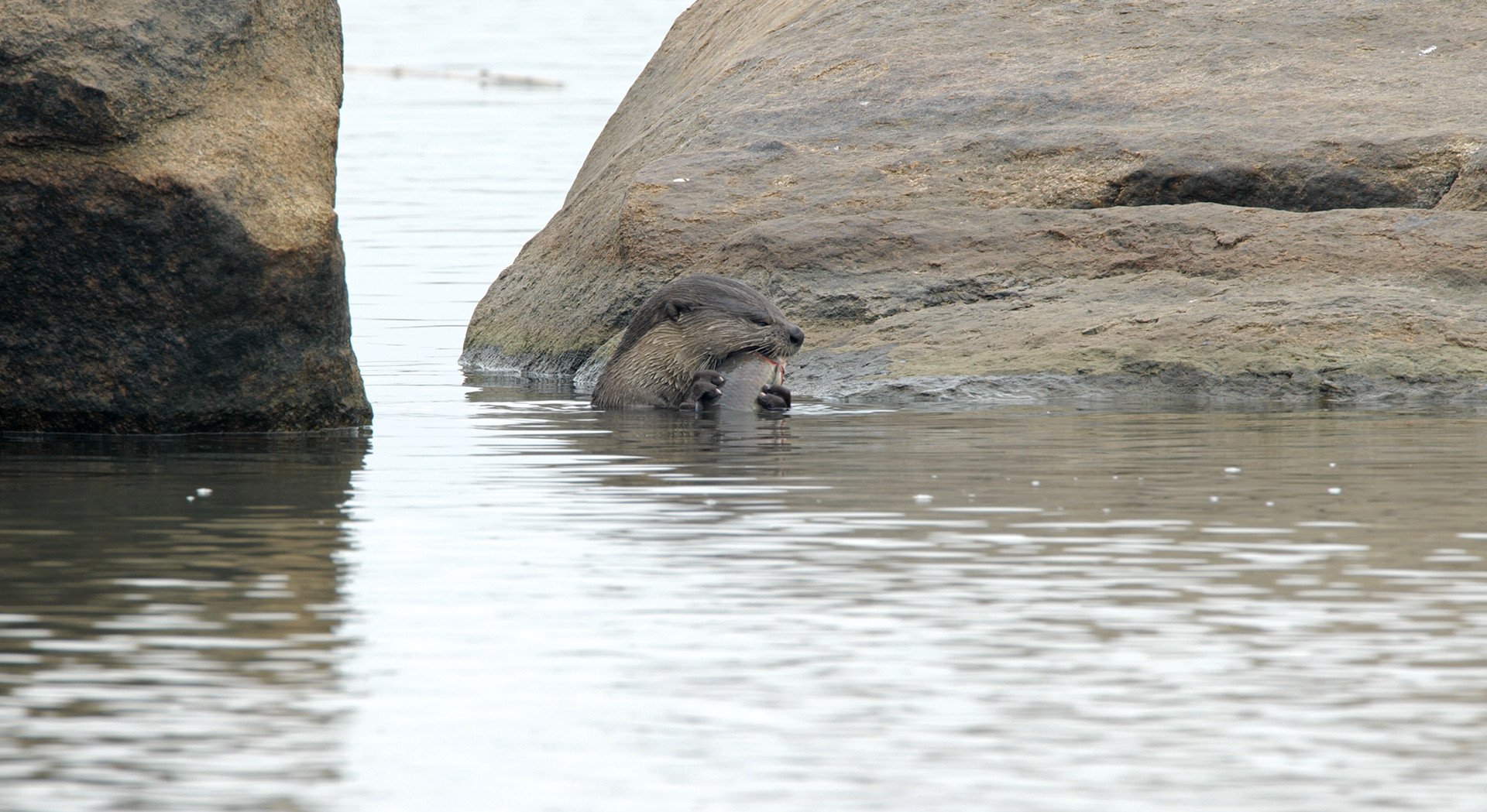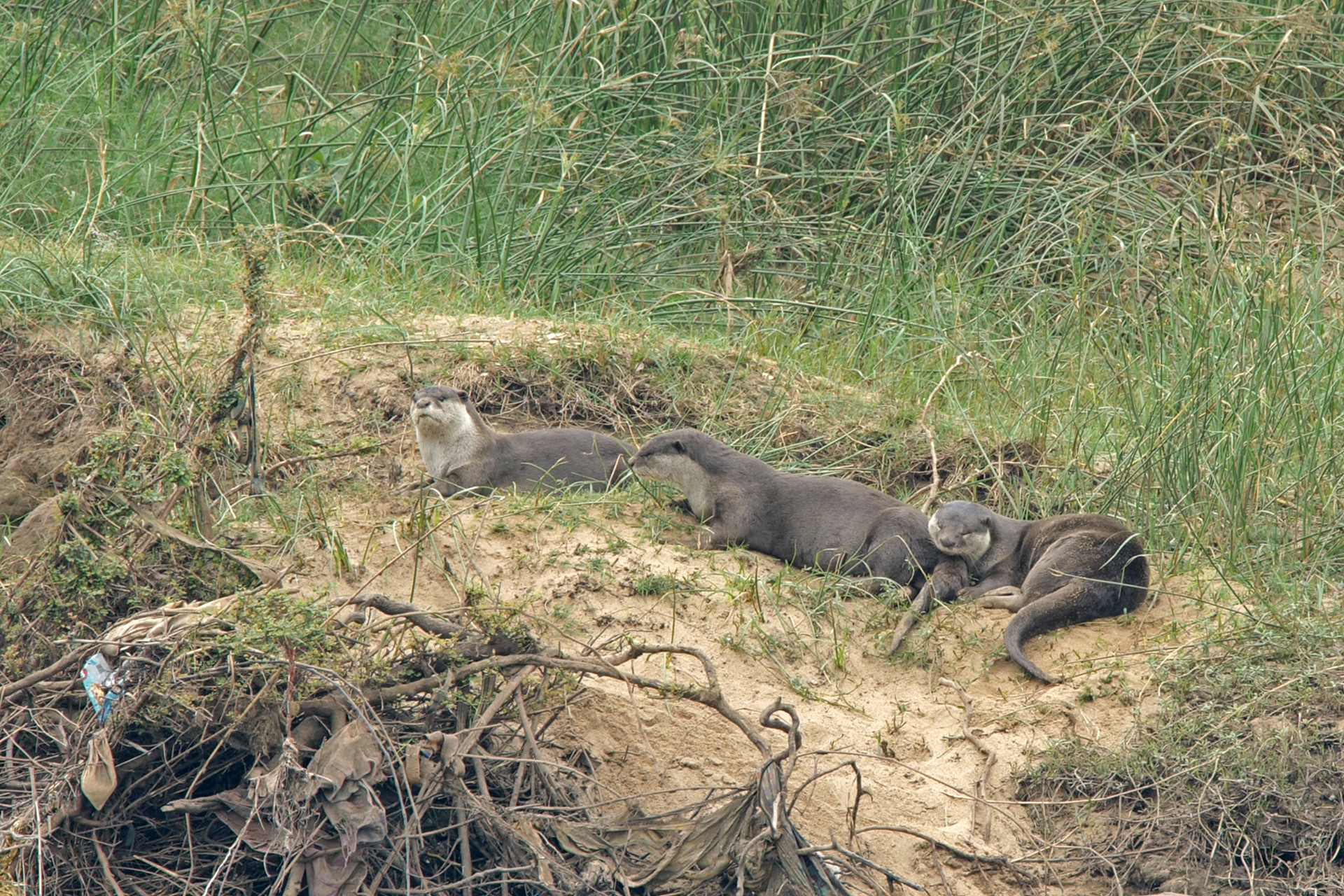This is the third story in a series of articles launched by Woodland and Nature inFocus, where we bring you stories and snapshots of explorers' journeys as they traverse the great Indian wilderness.
“Are you looking for otters, sir?”, a curious voice piped up from behind us as we scanned the river for any sign of ripples or bobbing heads. Looking at our puzzled reaction, he responded, “If someone is here with binoculars and camera, it is either for otters or crocodiles, sir." He introduced himself as Swamy, a local fisherman, who has been watching otters all his life. I was with Samad Kottur, a staunch wildlife activist, on the banks of the Tungabhadra river, now a part of the Tungabhadra Otter Conservation Reserve – the country's only reserve dedicated to the protection of otters.
Over the years, I have been fortunate to explore two river ecosystems, Cauvery and Tungabhadra, alongside two dedicated wildlife conservationist friends of mine, Nisarg Prakash and Samad. They have spent a large part of the last decade documenting and working to protect the wildlife that calls these rivers home.
There is something magical about watching rivers flow. Maybe it’s the therapeutic nature of the melody of a gurgling river or the reverence with which we tend to watch them as they carve their way through immense mountains and across boundless plains. To most people, rivers are synonymous with drinking water, and for many, it is a source of livelihood. But what most people fail to acknowledge is that rivers are wild spaces which support an incredible amount of biodiversity.
Otters have drawn me to rivers, more than any other species. I still vividly remember the first time I watched them; heads bobbing in and out of the river, then disappearing and reappearing elsewhere, clutching a fish in their webbed feet and claws. The apex predator of the Cauvery and Tungabhadra river systems, two species of otters are found here: Smooth-coated Otter and Small-clawed Otter. While the Smooth-coated Otter is the largest otter species in Asia, the Small-clawed Otter is the smallest in the world, and is mostly nocturnal.
The social animals that they are, I have seen otter packs as big as 13 individuals. They are like wild dogs and locals refer to them as Neer Naayi or Cheer Naayi (water dogs in Kannada). I have seen otters attacking crocodiles; there are even videos of tigers being chased away by otters. According to Swamy, otters are the only creatures crocodiles are scared of, not even humans.
After otters spend a lot of time in the water, they find a sandbank where they can rest, play, and groom. Watching otters play brings such inexplicable joy that it’s hard not to fall in love with them. But for Swamy or the other fishermen who depend on fishing for their livelihood, otters can be difficult neighbours. The primary diet of otters consists of fish and crustaceans, so, it is no surprise that they often come in contact with fishermen. Most fishermen tend to leave their nets out overnight or for long durations; the fish caught in these nets are easy prey for otters, but in the process, otters often damage the nets. While most fishermen like Swamy have learned to co-exist and tolerate such economic losses, there are sections of the local fishing folk who would rather not see an otter. An irked fisherman may not be the main threat to otters, but retaliatory killings and hunting for meat are not uncommon.
Like most other wildlife, otters are threatened by extensive poaching for pelts and other body parts. Poaching has decimated the otter population and they have been wiped out from many of the rivers. Otter pelts are extremely valuable and highly sought after in the fur business due to their dense and durable nature. They are used to manufacture fur coats and hats. Otter body parts are also used in traditional medicine, especially in China.
Today, unfortunately, our rivers are no more pristine. They are heavily dammed, extensively mined for sand and intensively fished. Habitat loss is the other major threat to otters. With the infrastructure and real estate market skyrocketing in the country, the illegal and extremely lucrative business of sand mining is fast becoming one of modern India's biggest ecological disasters.
River sand is preferred for construction because it requires less processing and has better quality than other sources. But it comes at a huge cost to the river and the life around it. Excessive sand mining alters the river bed, forces the river to change course, erodes riverbanks, and even leads to flooding. Besides affecting groundwater discharge, it also destroys habitats of aquatic animals and microorganisms.
Blast fishing or dynamite fishing is the practice of using explosives to stun or kill schools of fish for easy collection. It is such a dangerous operation that these explosives not only kill and poison the river but often the person deploying it loses his limbs and thus his livelihood.
It was these threats that prompted Samad Kottur to conduct extensive rapid biodiversity assessments and publish a report – identifying the stretch of the Tungabhadra river that needs immediate attention and protection, and the incredible wildlife that is observed here. Finally, in 2015, the Karnataka Forest Department officially declared the 34km stretch of the river from Mudlapur village near the TB Dam to Kampli as the Tungabhadra Otter Conservation Reserve.
Swamy asserts that efforts from the forest department in setting up anti-poaching camps, deploying more guards to patrol the reserve, and creating awareness programs have drastically reduced sand mining and dynamite fishing. This is not only beneficial for otters and other wildlife, but also for the local fishermen; a protected river means more fish for them to catch.
We had spent almost two hours scanning the waters, and that is when Swamy pointed at ripples moving towards us. "Otters!", we exclaimed in unison. There were four of them, moving towards the net Swamy had cast last night. Watching them wasn’t anything new for him, but for me, it proved to be a very special morning, as I spent the next two hours watching them gorging on fish, grooming each other, and playing along the sandbanks. Eventually, they headed upstream, in search of another fishing net maybe, or back to their den.
When I left, I did so with a huge smile. The Tungabhadra Otter Conservation Reserve is a true haven for these animals, and it filled me with a sense of hope; hope for the continued perseverance of these 'otterly' beautiful beings in our rivers.
Watch Adarsh's journey here:












